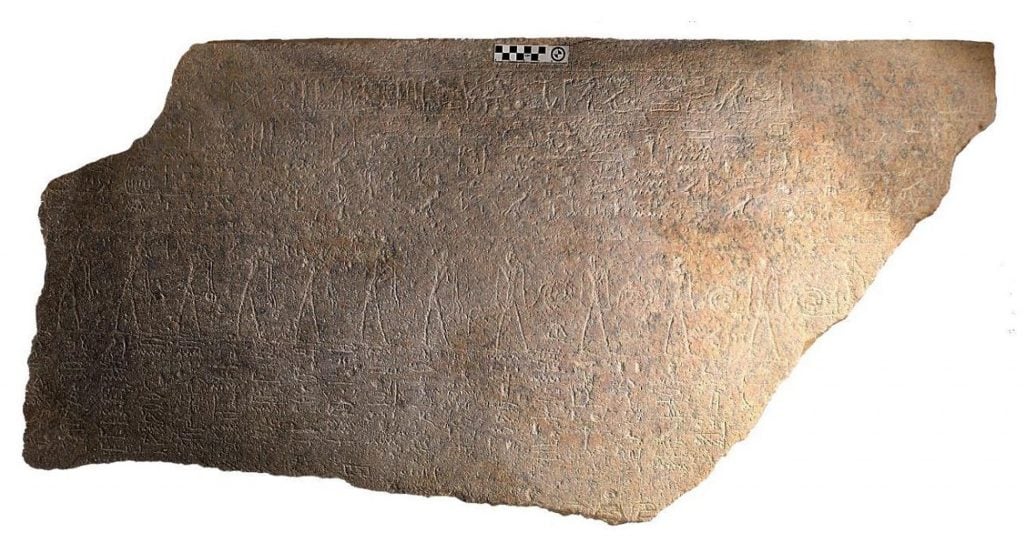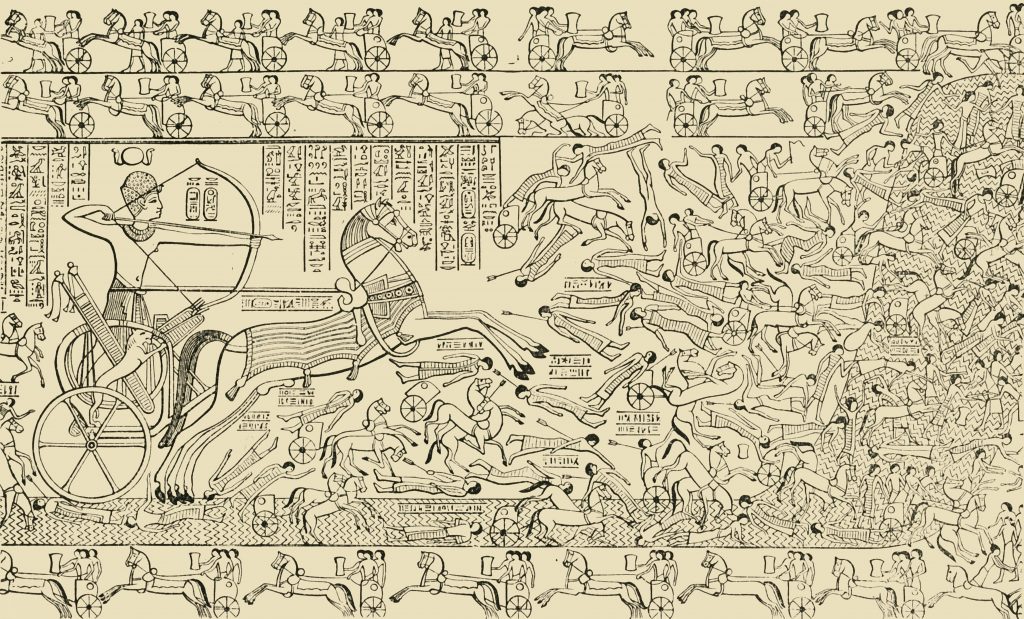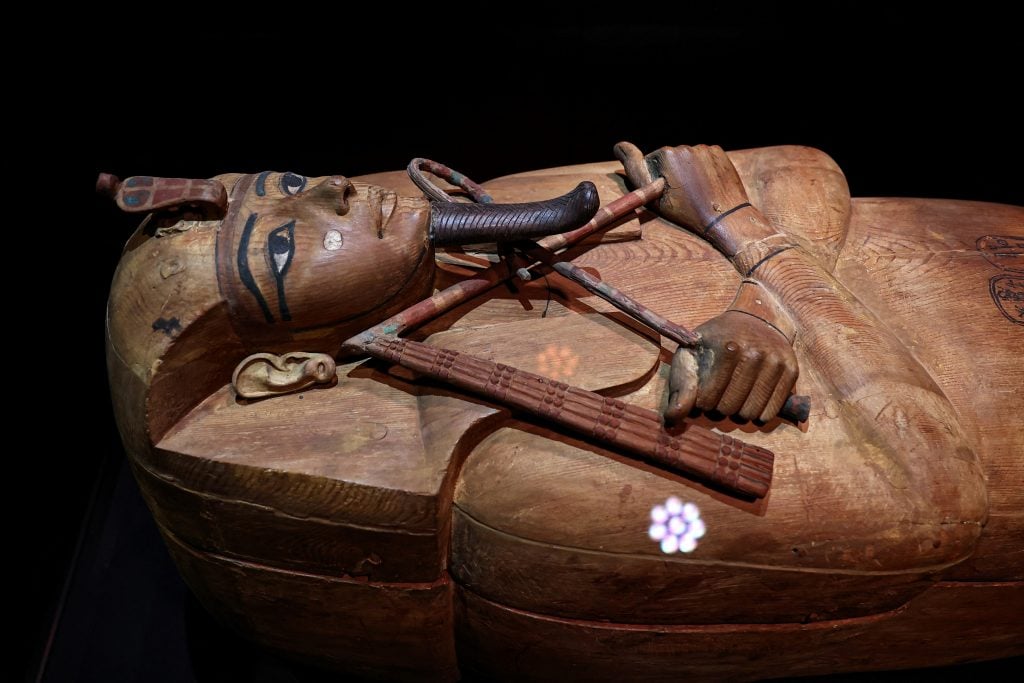Archaeology & History
Overlooked Hieroglyphics Reveal This Stone Slab Was Part of Ramses II’s Sarcophagus
The owner of the sarcophagus was long a mystery, until a researcher deciphered a cartouche.

The owner of the sarcophagus was long a mystery, until a researcher deciphered a cartouche.

Artnet News

An archaeologist has identified a granite slab, found in the Abydos necropolis in Egypt, as belonging to the sarcophagus of Egyptian pharaoh Ramses II. The key to his discovery? Overlooked hieroglyphics carved into the stone fragment.
The artifact was unearthed under the floor of a Coptic structure in 2009, though its owner remained a mystery. From its decoration, researchers were only able to pinpoint that it had been used to house two individuals, the first a high-ranking figure in the Egyptian New Kingdom and the second a high priest known as Menkheperre around 1000 B.C.E.
A new analysis of the writing on the slab was led by Frédéric Payraudeau, a researcher of Egyptology at Sorbonne University. He located a cartouche, an oblong engraving containing a group of hieroglyphics representing the mark of a ruler, which translated to “of Ramses II himself.” His findings were published in Revue d’Égyptologie.

Illustration of the Battle of Kadesh relief (c. 1275 B.C.E.) at the Ramesseum memorial temple in the Theban necropolis, showing Ramses II charging the fallen Hittite army. Photo: The Print Collector/Heritage Images via Getty Images.
One of the most prominent pharaohs of the New Kingdom, Ramses II ruled from 1279 to 1213 B.C.E., during which he launched major military campaigns and commenced a building project that stretched from the Delta to Nubia. For overseeing ancient Egypt’s most powerful era and vastly expanding its borders, the ruler is commonly remembered as Ramses the Great.
When he died in 1213 B.C.E. at age 90, Ramses was mummified and buried in a tomb in the Valley of the Kings in Luxor. But the rampant looting at the site meant his remains had to be repeatedly rewrapped and transferred. Each move was recorded in hieroglyphics on the linen wrapping his body.
The mummy of Ramses II was discovered in 1881 in the Deir el-Bahari temple complex, alongside the remains of other noble figures, including Seti I, the pharaoh’s father. Ramses II was found in a wood coffin, one not designed to house the ruler. The casket, though ornate, was far from the now-lost golden coffin he was originally buried in, which was nested within an alabaster sarcophagus, then the newly identified granite sarcophagus.

The coffin of Ramses II on view at “Ramses and the Gold of the Pharaohs” at the Grande Halle de la Villette in Paris, 2023. Photo: Anne-Christine Poujoulat / AFP via Getty Images.
The team believes that after Ramses’s tomb was robbed, Menkheperre recovered the stone sarcophagus, transported it to Abydos, and repurposed it for his own use.
The latest discovery, the researchers added, offers further proof that the Valley of the Kings was not just subject to repeated looting, but that its funerary relics were often reused. For example, the tomb of Merenptah, who succeeded Ramses II, was similarly robbed, with one of the sarcophagi recycled by Psusennes I for his own sumptuous tomb.
The remains of Ramses II are currently held by the National Museum of Egyptian Civilization in Cairo; his coffin is the star attraction of the blockbuster exhibition “Ramses and The Gold of the Pharaohs,” which opened in 2021 and is traveling through 2025.